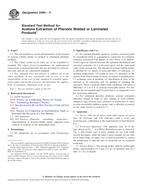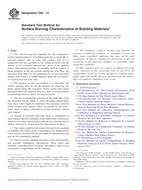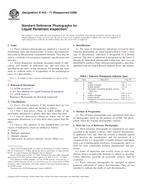1.1 These test methods cover the determination of the energy that causes plastic film to fail under specified conditions of impact of a free-falling dart. This energy is expressed in terms of the weight (mass) of the missile falling from a specified height which would result in 50 % failure of specimens tested.
1.2 Two test methods are described:
1.2.1 Test Method A employs a dart with a 38.10 ± 0.13-mm [1.500 ± 0.005-in.] diameter hemispherical head dropped from a height of 0.66 ± 0.01 m [26.0 ± 0.4 in.]. This test method may be used for films whose impact resistances require masses of about 50 g or less to about 2 kg to fracture them.
1.2.2 Test Method B employs a dart with a 50.80 ± 0.13-mm [2.000 ± 0.005-in.] diameter hemispherical head dropped from a height of 1.50 ± 0.03 m [60.0 + 0.25, -1.70 in.]. Its range of applicability is from about 0.3 kg to about 2 kg.
1.3 Two testing techniques are described:
1.3.1 The standard technique is the staircase method. By this technique, a uniform missile weight increment is employed during test and the missile weight is decreased or increased by the uniform increment after test of each specimen, depending upon the result (fail or not fail) observed for the specimen.
1.3.2 The alternative technique provides for testing specimens in successive groups of ten. One missile weight is employed for each group and missile weight is varied in uniform increments from group to group.
1.3.3 The staircase technique and the alternative technique give equivalent results both as to the values of impact failure weight which are obtained and as to the precisions with which they are determined.
1.4 The values stated in SI units are to be regarded as standard. The values stated in parentheses are for information only.
Note 1 – Tests on materials that do not break, for any reason, are not considered to be valid. It has been noted that certain materials may stretch so far as to bottom out at the base of certain test instruments without actually rupturing. Subcommittee D20.19 is currently considering methods for testing these materials. Anyone interested in participating in a Task Group should contact the Chairman of Subcommittee D20.19 through ASTM International Headquarters.
Note 2 – This test method is technically equivalent to ISO 7765-1: 1988, with the exception of a larger tolerance on the drop height in Test Method B. Also, the ISO method does not allow the alternative testing technique described in Section 11 of this test method.
1.5 This standard does not purport to address the safety concerns, if any, associated with its use. It is the responsibility of the user of this standard to establish appropriate safety and health practices and determine the applicability of regulatory limitations prior to use.
Product Details
- Published:
- 03/10/2003
- Number of Pages:
- 9
- File Size:
- 1 file , 120 KB


